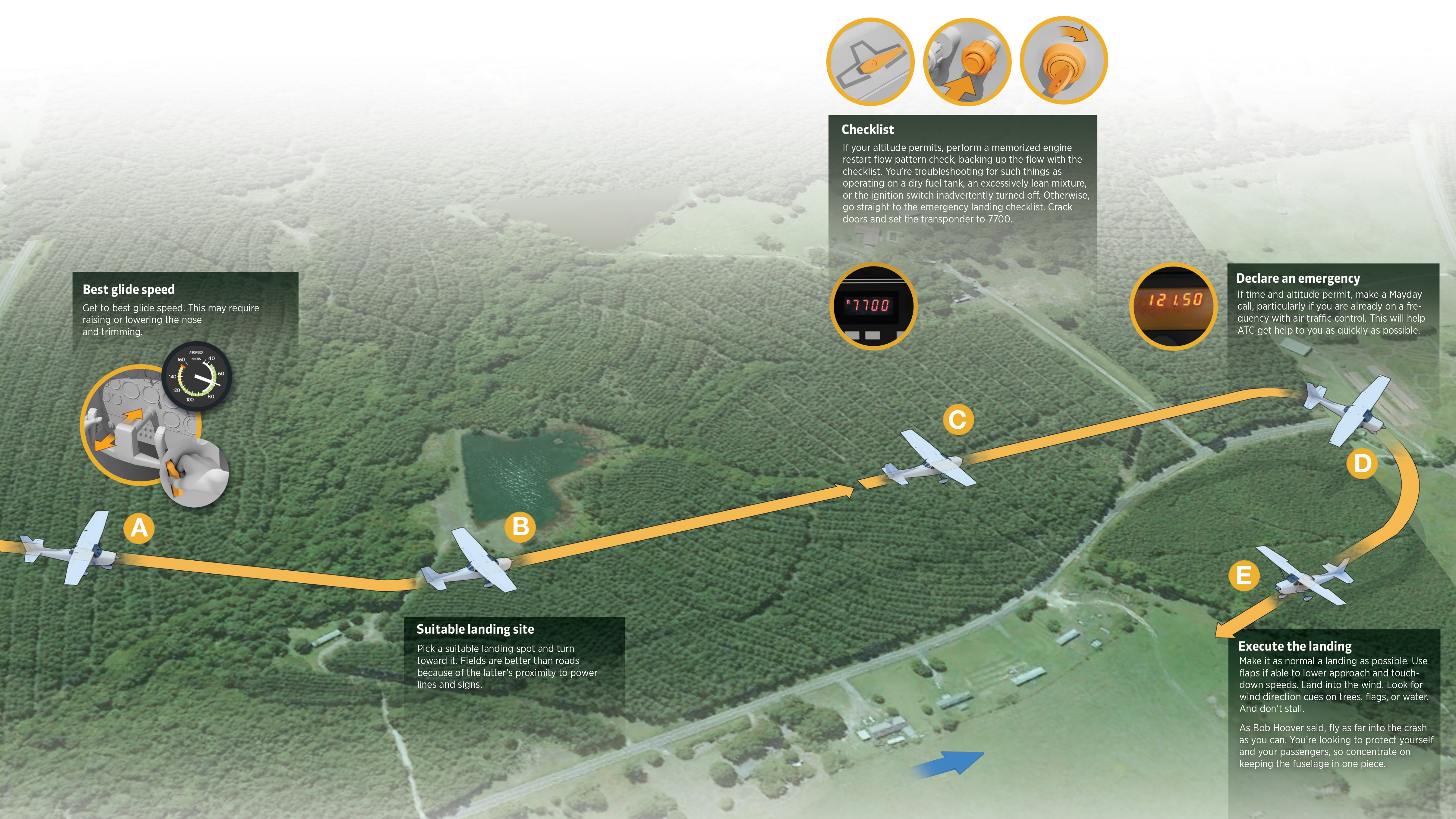Test pilot and airshow legend Bob Hoover liked to tell new pilots to, in the event of a forced landing, “fly the airplane as far into the crash as you can.” Student pilots train constantly for emergency landings so that, should one occur, they will react promptly and automatically. After you become a certificated pilot, you should strive to drill forced landing procedures so that the rote learning doesn’t fade. Increase the odds of a successful outcome by filing and opening a VFR flight plan, or ask for flight following so that someone somewhere knows where you are and where you’re supposed to be.
Think A, B, C
Then D, E
An easy-to-remember method for troubleshooting during an engine failure is as simple as A, B, C.
A—airspeed. Set your best glide speed.
B—best landing spot.
C—checklist. If running a flow, back it up with your checklist.
D—declare an emergency (squawk 7700 or give a Mayday call).
E—execute the landing.
The AOPA Air Safety Institute’s Emergency Procedures Safety Spotlight features many more considerations for safely handing an off-airport landing, engine fire, or other emergency.




